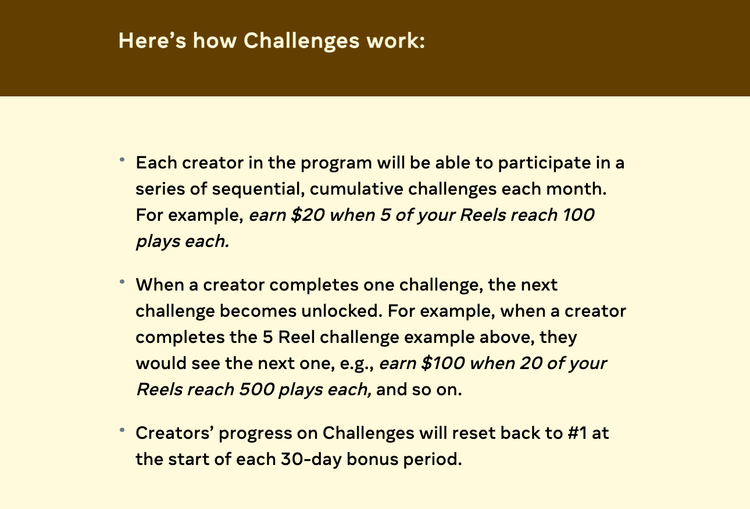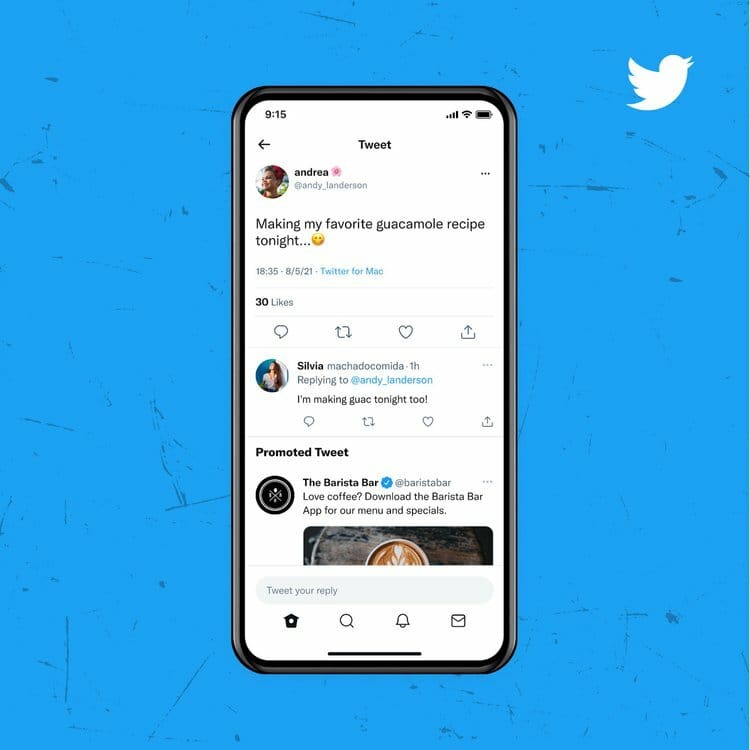Happy Friday! The Interactive Advertising Bureau's NewFronts event, which brings together brands, agencies, and media buyers for a first look at new advertising and digital content solutions, took place this week. It should come as no surprise that creators are at the core of many of the innovations announced by TikTok, Snap Inc., Twitter, Amazon, and others during the event. In today's newsletter, I break down the most notable.
Today’s Edition:
TikTok introduces TikTok Pulse
Snap Inc. and Cameo announce a new partnership
Instagram tests a full-screen Home Feed
With TikTok Pulse, TikTok Offers Contextual Ads & Creator Revenue Sharing

TikTok introduced a new ad product called TikTok Pulse. Using the new contextual advertising solution, brands can place ads on the For You feed among the top four percent of videos, based on a combination of brand suitability, view engagement, video views, and creator engagement signals. In addition, brands can choose which type of video they want to appear with their ads from 12 different categories, such as beauty, fashion, cooking, pets, and gaming.
To ensure videos are brand-safe, TikTok will use inventory filters. Additional post-campaign measurement tools such as third-party brand sustainability and viewability verification are also available. These provide advertisers with the transparency to analyze and understand the impact of their campaigns.
There is also a creator revenue share tie-in, making it a first for TikTok. Creators of the videos that have ads placed next to them can earn money through a 50/50 revenue share program. In order to be eligible, creators must have at least 100,000 followers.
Pulse ads are currently available to only a select group of advertisers, who can purchase them through TikTok Ads Manager with a fixed CPM.
Through Pulse ads, brands can tie themselves to cultural trends and moments happening across the platform. By having ads appear with trending videos, brands can be discovered by new audiences and connect with existing communities, all while seamlessly integrating into the TikTok experience. Further, brands also get some assurance that their ads will be seen by a large, relevant, and engaged audience, which is important if their KPIs are based on achieving specific performance metrics.
The revenue share with creators component is also important, especially considering the backlash TikTok has faced regarding its Creator Fund and low payments. By splitting advertising revenue with creators, who are ultimately responsible for keeping users engaged on the app, TikTok rewards creators in a way that directly correlates with the value they bring.
Despite the popularity of short-form video content, one of the biggest challenges for social media platforms is monetization, both for the platforms themselves and for content creators. TikTok looks to have found itself a solution with Pulse. However, it’s not alone as Meta and Snapchat have also recently started testing ad products with revenue shares for their short-form video experiences. Meta is testing Overlay Ads for Facebook Reels while Snapchat is testing mid-roll ads for creators who are part of Snap Stars. YouTube has also said it will test ads for YouTube Shorts, but has not disclosed whether creators will receive a cut, similar to what it does with the YouTube Partner Program for long-form videos.
Industry News
Snap Inc. announced a new partnership with Cameo in the Snap x Cameo Advertiser Program. Built by Snap and powered by Cameo for Business, the program gives Snapchat advertisers the opportunity to partner with over 45,000 personalities on Cameo, including actors, athletes, musicians, influencers, and reality stars to create custom, short-form video ads, exclusively for Snap.
Cameo for Business will work with Snap advertisers to find the best talent for campaigns based on their needs. They will also have access to free creative services such as campaign ideation and video editing, enhanced program services such as preferred program pricing and exclusive benefits, and high-performing content with lower CPMs and higher install rates.
Beta partners Mattress Firm, 37Games, Kraft, and Molson Coors have had early success with the program. For example, Mattress Firm partnered with talents such as NFL players Jonathan Taylor and Cam Jordan, Olympian Kerri Walsh Jennings, and other TV personalities and content creators to produce 22 videos in a span of two weeks. The videos and ads outperformed previous campaign averages with the brand seeing an 8-point lift in ad awareness and a video view rate that was 3x the retail category average.
As a first-of-its-kind partnership for both platforms, the Snap x Cameo Advertiser Program will give advertisers the ability to tap into celebrity talent for branded content campaigns in a simpler way than what is typically needed when brands want to work with celebrities. In addition, it represents a change from the current trend of advertisers partnering more with smaller, digitally native creators. While partnerships with these types of creators drive value for many advertisers, there is still a demand for more partnerships with recognizable talent born outside of social media platforms. In a way, the program hints at the likely future of celebrity partnerships, where advertisers and celebrities team up for digital content campaigns as opposed to TV commercials and other forms of traditional advertising.
A key feature of the program is that it's not just focused on connecting advertisers with celebrity talent, but also emphasizes bringing the two parties together to create content, specifically for Snap. The user experience and overall format of social media platforms should align with the content being created and shared, just as TikTok has demonstrated with its own platform.
Overall, the Snap x Cameo Adverister Program is a win for all parties involved. Snap adds on to Creator Marketplace and expands its influencer marketing initiatives, Cameo strengthens its B2B leg, and advertisers can drive business and marketing goals with celebrity talent partnerships.

Instagram launched a test of a full-screen Home Feed. In a recent video by Instagram head Adam Mosseri, he revealed the platform is testing a new, full-screen immersive experience in the Home feed, where photos and videos take up a larger portion of the screen.
When users open up the app, they will immediately see content in the vertical format. Based on the screenshots shared, much of the current Instagram user experience will remain the same with the buttons for Search, Reels, and Shopping being accessible via the bottom navigation bar and Notifications, Messaging, and New Post buttons remaining in the top navigation bar. Instagram also confirmed that the Stories bar will remain where it is today as part of the test. According to Mosseri, this test is part of Instagram’s efforts to “advance Instagram forward in a world where more people are mobile-first.”
The new full-screen Home feed experience makes a lot of sense since it optimizes the viewing experience for short-form video content. As the platform has revealed in its last few earnings calls and public statements, Reels is one of its biggest priorities so it’s a no-brainer that it would make changes that better support this format. Instagram built its popularity on photos and the ability to see content from your followers, but the Instagram seen today is video-based and features content from accounts that users don't follow. It can either be a good thing or a bad thing, depending on personal preferences. Instagram's dramatic changes may dissuade users who have been on the app since it was a simple photo-sharing app, but if the market is any indication, it is putting itself in a better position to compete with TikTok.

Meta shared updates for Reels Play bonus programs. The company announced new updates to Reels Play bonus programs, which reward creators for churning out Reels content across Facebook and Instagram.
First, it’s making adjustments to how payouts are calculated to reward creators with a range of audience sizes. Second, it's rolling out Challenges on Facebook, a new component of the program where creators can earn money through a series of sequential, cumulative challenges each month. For example, creators can earn $20 when five of their Reels get 100 plays each. After completing a challenge, they unlock another challenge, which pays out more and has a higher view threshold. At the end of each month, creators’ progress on Challenges will reset to the first challenge. Lastly, it shared that it’s giving creators more visibility into how Reels are performing with new insights. Creators can see how many plays each of their eligible Reels have received within a given earning period.
Meta’s updates for its Reels Play bonus programs are strong and beneficial for participating creators. Adjustments to how payouts are calculated will help smaller creators be able to monetize their Reels content by making the thresholds for payouts lower. Previously, the Reels Play bonuses were better suited for larger creators who could generate a great number of views on their content and unlock payouts. With the changes to payout calculations and the introduction of Challenges, more creators, especially smaller audiences benefit from the program and can earn starting money relatively quickly.

Twitter rolled out a new Tweet Replies ad placement. Following months of testing, Twitter is giving advertisers access to the new kind of ad placement for all install campaigns. Through the placement, advertisers can place ads after the first reply under a Tweet. Based on early testing, advertisers leveraging Tweet Replies have seen increased impressions, increased attributed installs, and decreased cost per installs. Advertisers who want to run campaigns with other objectives such as reach, video views, and engagements will eventually have access to the ad placement down the road. Along with this, Bruce Flack, Twitter’s GM of Revenue Product, revealed that creators will likely be able to opt into the ad placement and receive a cut of ad revenue in the future.
Although Elon Musk intends to reduce Twitter's reliance on ad revenue once his deal to purchase Twitter takes effect, the platform continues to invest in new advertising solutions. Similar to TikTok Pulse, advertisers can place ads in relevant places where audiences are engaged, in this case, the replies to Tweets. There is also the opportunity for creators to eventually earn a share of advertising revenue when ads are placed in the replies of their Tweets. Flack said that this capability is still in the works, but it will be exciting for creators once available. The ability to monetize Tweets would encourage creators to push more content and in return, drive up user engagement.

What I’m Reading
The new wave of influencers-as-creative-directors is more than just a PR stunt (Glossy)
Inside the evolution of BuzzFeed’s creators program (Digiday)
Tech firms sell creators as the future of ads (Axios)
How creators have become strategy consultants for publishers on TikTok (Digiday)
YouTube plans live shopping bet as ad revenue growth slows (Hollywood Reporter)
